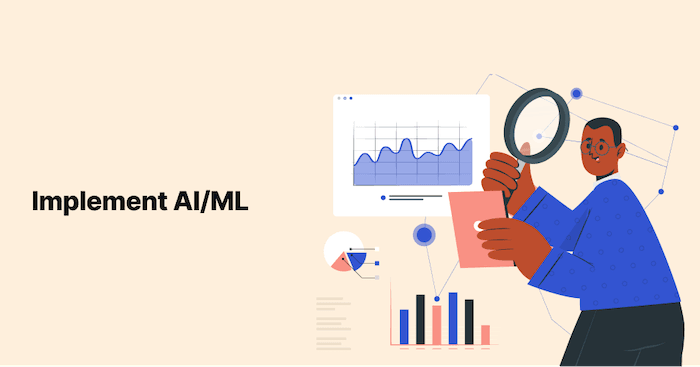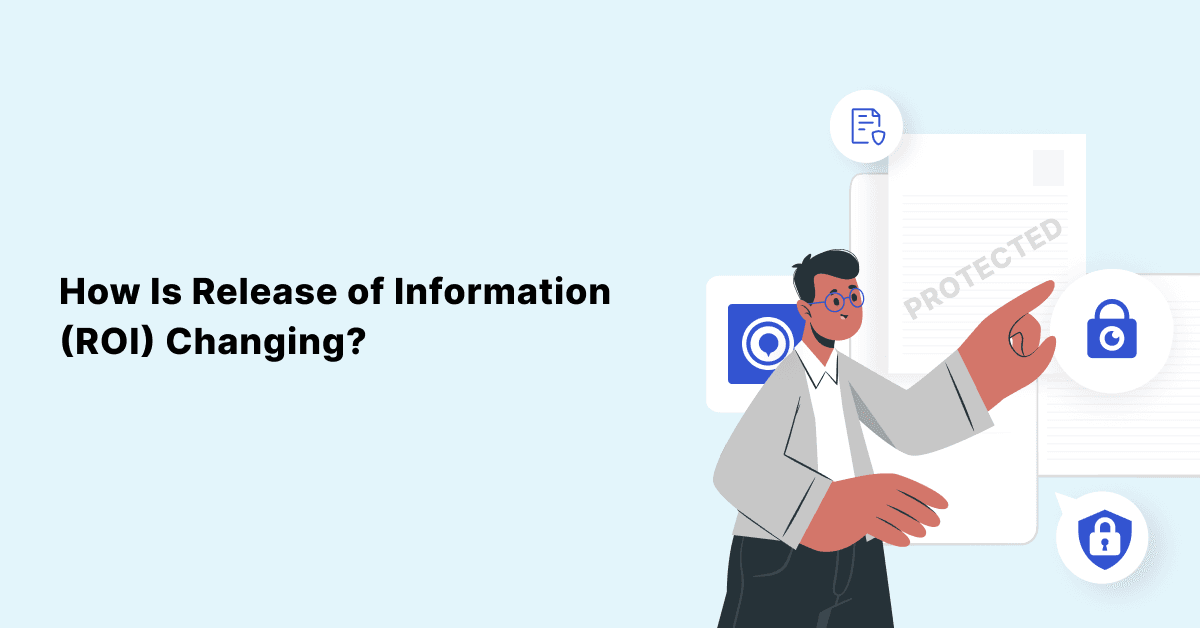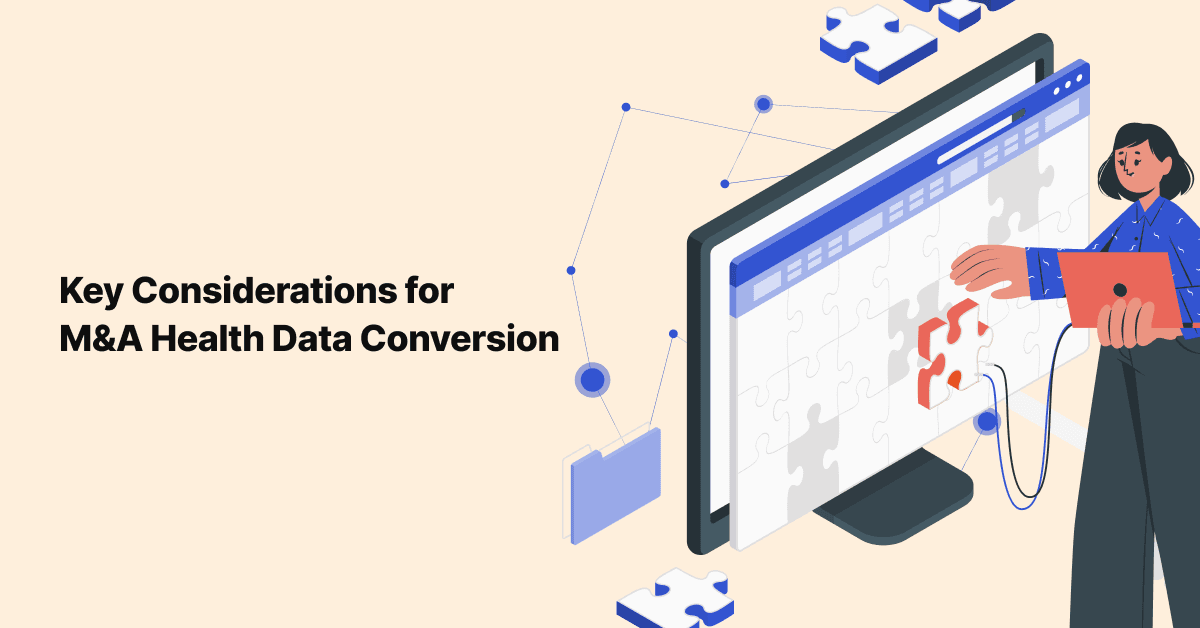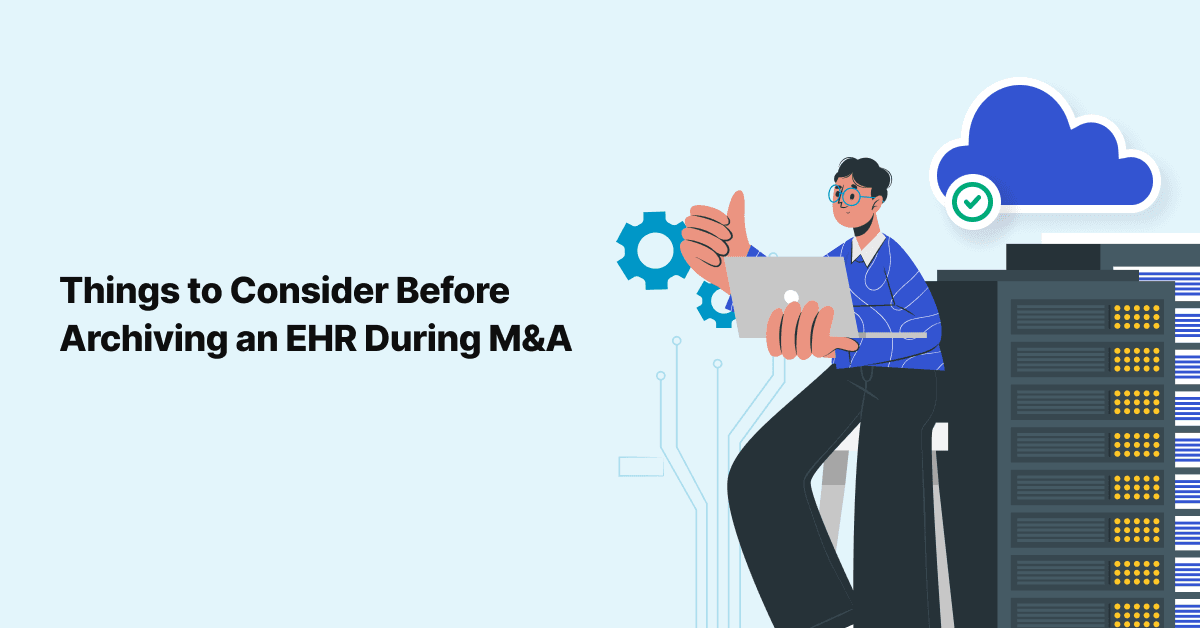
How to Decide When Your Healthcare Organization Should Implement AI/ML
Artificial Intelligence, Machine Learning, and Data Science are the buzzwords-du-jour for healthcare …

Are you curious about the changes happening in healthcare’s Release of Information (ROI) process?
Gone are the days of paper-based processes as digital technologies like blockchain and AI take over. This shift enables secure, rapid, and efficient data exchange that enhances patient outcomes with in-depth analytics. By going digital, ROI offers enhanced security, cost savings, accuracy, and collaboration among care providers. AI-powered solutions make staying compliant with privacy laws like HIPAA a breeze. With this blog, join us in exploring what the future holds for Release of Information.
In the blog, you will learn:
Imagine you’ve just finished a medical procedure, and you need to share your medical records with your patient’s insurance provider or another healthcare provider. This is where Release of Information (ROI) process begins!
In healthcare, ROI is the process of authorizing the sharing of medical records or patient information between healthcare providers or authorized third parties. But did you know that ROI is not just about sharing information on medical procedures or diagnoses? In fact, ROI covers all aspects of patient information, including lab reports, imaging results, medication lists, and more.
There are two types of releases in the ROI process - authorized releases to third parties and releases that typically require no patient authorization to complete, such as Treatment, Payment, and Operations (TPO) activities.
Authorized releases to third parties require patient consent or authorization, which is obtained through a signed release form. These releases typically involve the sharing of medical records with parties such as insurance companies, attorneys, or patients. Patients have the right to specify the information they authorize to be released and to whom the information is released. Healthcare organizations must comply with all applicable regulations and ensure that patient privacy and data security are protected during the release process.
On the other hand, TPO activities are releases that do not require patient authorization to complete. These activities include activities such as sharing medical information with healthcare providers for the purpose of treatment or sharing information with insurance companies for payment purposes. However, some state laws restrict TPO releases, and healthcare organizations must comply with these regulations. For example, in Minnesota, patient authorization is required even for continuity of care releases.
To comply with these regulations, healthcare organizations must ensure that their ROI processes are appropriately structured and that staff is trained on the legal requirements for record-sharing. This may include implementing secure communication channels, utilizing secure cloud storage, and implementing robust data encryption measures.
The Health Insurance Portability and Accountability Act (HIPAA) and the Health Information Technology for Economic and Clinical Health (HITECH) Act are two key regulations that govern the release of health information in the United States. These regulations have been instrumental in improving patient privacy and data security in healthcare.
In addition to federal regulations, state-level regulations also play a significant role in the release of information process. Many states have their own laws governing release of health information, which can vary widely in terms of their requirements and restrictions.
Currently, most states have a 30-day turnaround time requirement for releasing medical records to patients, with some states, such as Washington, requiring a shorter turnaround time of 15 days. However, as patient access to healthcare information becomes increasingly important, it is likely that these requirements will evolve to support faster access to records.
The changing regulatory landscape has created both opportunities and challenges for healthcare organizations. On the one hand, increased regulation has led to improved data security and privacy for patients. On the other hand, complying with complex regulations can be a significant burden for healthcare providers, requiring them to invest time and resources into ensuring compliance.
With the growing emphasis on patient access to healthcare information, the ROI process will need to evolve to support a “no barriers” approach to patient access. This will require changes in the way that healthcare organizations manage and share patient health information.
To support a “no barriers” approach to patient access, healthcare organizations will need to implement changes in their Release of Information (ROI) processes. Here are some specific strategies that can be employed:
EHRs can provide patients with instant access to their health information, allowing for faster processing times and more efficient record-sharing. Patient portals can allow patients to access their health information securely online, providing them with immediate access to their medical records, test results, and other healthcare information. By providing patients with easy and convenient access to their health information, healthcare organizations can promote patient engagement and participation in their healthcare.
To ensure that patient privacy and data security are protected, healthcare organizations must provide secure data-sharing platforms that comply with regulatory standards. This may include implementing secure communication channels, utilizing secure cloud storage, and implementing robust data encryption measures.
To promote consistency and efficiency in the ROI process, healthcare organizations should establish clear policies and procedures for record-sharing. This should include guidelines for responding to record requests, timelines for processing requests, and procedures for handling sensitive patient information.
When preparing to release patient information, it is important to distinguish between a Designated Record Set (DRS) and a Legal Medical Record (LMR). A DRS is any collection of medical records generated by or on behalf of the healthcare provider, which is organized and maintained in accordance with HIPAA regulations. The DRS should include all relevant medical records, such as laboratory results, radiology reports, clinical notes, medication orders, and discharge summaries. In addition, the DRS must contain all past and present treatment records related to an individual’s current condition. It is important for a healthcare provider to establish a comprehensive DRS so that all of the necessary information can be quickly identified when needed for patient care or release purposes.
On the other hand, an LMR is an official record created and maintained by the healthcare provider that contains all pertinent medical information about an individual patient. The LMR includes both physical documents, such as progress notes and laboratory results, as well as electronic information stored in systems such as Electronic Health Records (EHRs). The LMR serves as an authoritative source of medical information that is used by healthcare providers when making treatment decisions or providing care to patients. An LMR must also meet HIPAA requirements regarding the security and confidentiality of patient data.
It is essential for healthcare providers to understand the difference between a DRS and an LMR when releasing patient information. Establishing clear delineations between these two record sets can help ensure the accuracy of released data and compliance with applicable privacy laws.
Healthcare organizations must ensure that staff is properly trained on the ROI process and regulatory requirements. Staff should be trained on how to respond to record requests, how to handle sensitive patient information, and how to comply with regulatory requirements.
As regulations continue to evolve, healthcare organizations must remain proactive in their approach to patient access and ROI processes. By implementing technological solutions, establishing clear policies and procedures, and training staff, healthcare organizations can facilitate a “no barriers” approach to patient access while ensuring patient privacy and data security.
One other way to better meet the requirements of Release of Information is to outsource this process to experts who know it in and out. Outsourcing Release of Information in healthcare to experts is an important strategy for providing quality care and services to patients. Experts are able to provide a level of expertise that non-experts may not possess, resulting in more detailed, accurate, and comprehensive documents. Additionally, outsourcing can lead to improved patient outcomes and better overall care.
For starters, outsourcing allows healthcare professionals to focus on the primary duties at hand while experts take over the tedious task of document release. This reduces stress and workload for those within the organization. Furthermore, with expert assistance, organizations are able to ensure that all necessary information is released in a timely manner. This leads to greater efficiency in terms of both time and money as it avoids any potential delays due to errors or mistakes caused by inexperience.
Furthermore, outsourcing allows healthcare organizations to take advantage of specialized knowledge and experience in a particular field. Outsourcing increases access to Subject Matter Experts who have years of experience dealing with sensitive medical documents release. This gives organizations the confidence that their records are being handled properly and securely by someone who knows what they’re doing.
Finally, outsourced document release also ensures compliance with all applicable laws and regulations regarding the disclosure of health information, such as HIPAA and HITECH regulations. With expert help, you can rest assured that your organization remains compliant while maintaining patient privacy standards per industry best practices.
Overall, outsourcing Release of Information in healthcare has many advantages, including improved efficiency, reduced workloads, and access to subject matter expertise which enables compliance with applicable laws while maintaining patient privacy standards per industry best practices.
Join over 3,200 subscribers and keep up-to-date with the latest innovations & best practices in Healthcare IT.

Artificial Intelligence, Machine Learning, and Data Science are the buzzwords-du-jour for healthcare …

Healthcare has witnessed a significant increase in Mergers and Acquisitions (M&As) in the last decade. One …

EHR or Electronic Health Records are being implemented increasingly in health organizations across several …